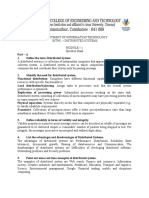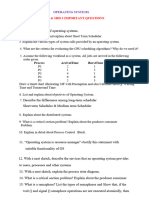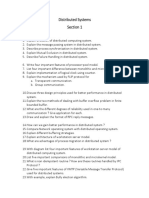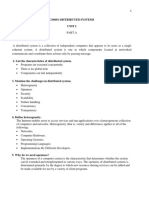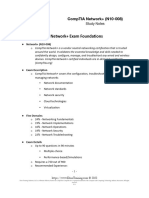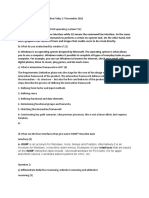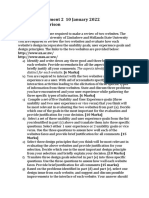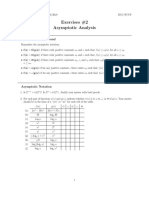0% found this document useful (0 votes)
159 views1 pageTutorial 1
This document contains questions about distributed systems, parallel computing, and middleware. It asks about the role of middleware, types of transparency in distributed systems, advantages and disadvantages of distributed systems, Amdahl's law for measuring parallel performance, and examples of speedup calculations using Amdahl's law.
Uploaded by
Marlon TugweteCopyright
© © All Rights Reserved
We take content rights seriously. If you suspect this is your content, claim it here.
Available Formats
Download as PDF, TXT or read online on Scribd
0% found this document useful (0 votes)
159 views1 pageTutorial 1
This document contains questions about distributed systems, parallel computing, and middleware. It asks about the role of middleware, types of transparency in distributed systems, advantages and disadvantages of distributed systems, Amdahl's law for measuring parallel performance, and examples of speedup calculations using Amdahl's law.
Uploaded by
Marlon TugweteCopyright
© © All Rights Reserved
We take content rights seriously. If you suspect this is your content, claim it here.
Available Formats
Download as PDF, TXT or read online on Scribd
/ 1




























